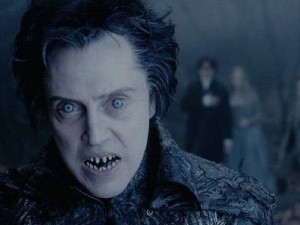Hammer Studios was a UK film company that produced many genres of movies but is perhaps best known for their impressive run of horror film starting with The Quatermass Xperiment a feature film adaptation of a live television play and running through the dismal and tired To the Devil a Daughter. Between those  films Hammer discovered and promoted actors who would go on to be some of the biggest genre stars in the world, Peter Cushing and Christopher Lee. Bring color to Frankenstein with their production The Curst of Frankenstein Hammer studios leaned into exploitive film styles with garish blood and explicit imagery of human organs that previous studios had obscured with edits.
films Hammer discovered and promoted actors who would go on to be some of the biggest genre stars in the world, Peter Cushing and Christopher Lee. Bring color to Frankenstein with their production The Curst of Frankenstein Hammer studios leaned into exploitive film styles with garish blood and explicit imagery of human organs that previous studios had obscured with edits.
Sleepy Hollow, though with a muted color plate save for vividly bright blood, is thoroughly a throwback to these Hammer Films, Burton has populated the cast with distinguished British actors and a small speaking part for Hammer’s star Christopher Lee as a New York City judge. While the film is supposedly set in New York state the manner, accents, and culture of the cast and characters scream a British environment. The set design in this movie doesn’t reflect Burton’s usual obsessions with German expressionism but reflects a more grounded realistic approach to the setting something I think may have come from the producer Francis Ford Coppola who just a few years earlier had experiment himself with classic horror directing his production of Dracula.
In this film inspired by the classic story Ichabod Crane isn’t a schoolteacher but a young police detective dedicated to science and reason as the sole methods for solving any crime’s mystery. He is dispatched to the isolated settlement of Sleepy Hollow to investigate a series of murders by beheading. Upon arrival the town’s leading citizens advised him that these are no ordinary killing but rather the supernatural vengeance of a hessian mercenary slain during the Revolutionary War. Dismissing the stories of ghosts and goblins Crane finds himself in a tangled mystery of greed, forbidden love, and undead mercenaries while discovering the truth of his own forgotten history.
Sleepy Hollow is an enjoyable film that doesn’t put on airs with a greater meaning buried in its subtext. It is an entertaining tale of love, greed, and vengeance that uses the Washington Irving story for a few moments of imagery but lives and succeeds on its own terms.
